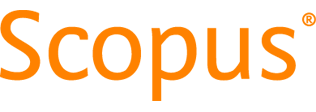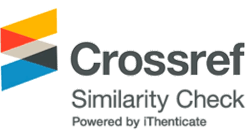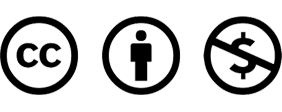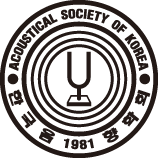Research Article
A. D. Friederici, "Towards a neural basis of auditory sentence processing," Trends Cogn. Sci. 6, 78-84 (2002).
10.1016/S1364-6613(00)01839-815866191A. M. Liberman, K. S. Harris, H. S. Hoffman, and B. C. Griffith, "The discrimination of speech sounds within and across phoneme boundaries," J. Exp. Psychol. 54, 358-368 (1957).
10.1037/h004441713481283W. F. Ganong, "Phonetic categorization in auditory word perception," J. Exp. Psychol. Hum. Percept. Perform. 6, 110-125 (1980).
10.1037/0096-1523.6.1.1106444985S. Borsky, B. Tuller, and L. P. Shapiro, "How to milk a coat: the effects of semantic and acoustic information on phoneme categorization," J. Acoust. Soc. Am. 103, 2670-2676 (1998).
10.1121/1.4227879604360B. McMurray, M. K. Tanenhaus, and R. N. Aslin, "Gradient effects of within-category phonetic variation on lexical access," Cognition, 86, B33-B42 (2002).
10.1016/S0010-0277(02)00157-912435537J. Polich, "Updating P300: An integrative theory of P3a and P3b," Clin. Neurophysiol. 118, 2128-2148 (2007).
10.1016/j.clinph.2007.04.01917573239PMC2715154S. Sutton, M. Braren, J. Zubin, and E. R. John, "Evoked-potential correlates of stimulus uncertainty," Science, 150, 1187-1188 (1965).
10.1126/science.150.3700.11875852977Y. Criel, E. Depuydt, M. Miatton, P. Santens, P. van Mierlo, and M. De Letter, "Cortical generators and connections underlying phoneme perception: A mismatch negativity and P300 investigation," Brain Topogr. 37, 1089-1117 (2024).
10.1007/s10548-024-01065-z38958833J. W. Tampas, A. W. Harkrider, and M. S. Hedrick, "Neurophysiological indices of speech and nonspeech stimulus processing," J. Speech. Lang. Hear. Res. 48, 1147-1164 (2005).
10.1044/1092-4388(2005/081)16411803M. K. Kalaiah and U. Shastri, "Cortical auditory event-related potentials (P300) for frequency-changing dynamic tones," J. Audiol. Otol. 20, 22-30 (2016).
10.7874/jao.2016.20.1.2227144230PMC4853895C. Escera, M. J. Corral, and E. Yago, "An electrophysiological and behavioral investigation of involuntary attention towards auditory frequency, duration and intensity changes," Cogn. Brain Res. 14, 325-332 (2002).
10.1016/S0926-6410(02)00135-012421656D. Norris, J. M. McQueen, and A. Cutler, "Merging information in speech recognition: Feedback is never necessary," Behav. Brain Sci. 23, 299-325 (2000).
10.1017/S0140525X0000324111301575J. M. McQueen and A. Cutler, "Spoken word access processes: An introduction," Lang. Cogn. Process. 16, 469-490 (2001).
10.1080/01690960143000209J. L. McClelland and J. L. Elman, "The TRACE model of speech perception," Cogn. Psychol. 18, 1-86 (1986).
10.1016/0010-0285(86)90015-03753912F. Pulvermüller, Y. Shtyrov, and R. J. Ilmoniemi, "Brain signatures of meaning access in action word recognition," J. Cogn. Neurosci. 17, 884-892 (2005).
10.1162/089892905402111115969907V. M. Harwood, D. Kleinman, G. Puggioni, and A. Baron, "The P300 event-related potential predicts phonological working memory skills in school-aged children," Front. Psychol. 13, 918046 (2022).
10.3389/fpsyg.2022.91804636312112PMC9599408J. Y. Lee, N200 and P300 evoked by stimuli straddling category boundary in lexical context, (Ph.D. dissertation, University of Tennessee Health Science Center, 2012).
H. H. Jasper, "The ten-twenty electrode system of the International Federation," Electroenceph. Clin. Neurophysiol. 10, 371-375 (1958).
P. Celsis, B. Doyon, K. Boulanouar, J. Pastor, J. F. Démonet, and J. L. Nespoulous, "ERP correlates of phoneme perception in speech and sound contexts," Neuroreport, 14, 1523-1527 (1999).
10.1097/00001756-199905140-0002410380974A. C. Maiste, A. S. Wiens, M. J. Hunt, M. Scherg, and T. W. Picton, "Event-related potentials and the categorical perception of speech sounds," Ear Hear. 16, 68-89 (1995).
10.1097/00003446-199502000-000067774771F. P. Leite and R. Ratcliff, "Modeling reaction time and accuracy of multiple-alternative decisions," Atten. Percept. Psychophys. 72, 246-273 (2010).
10.3758/APP.72.1.24620045893PMC2805113D. Wendt, T. Brand, and B. Kollmeier, "An eye-tracking paradigm for analyzing the processing time of sentences with different linguistic complexities," PLOS ONE, 9, e100186 (2014).
10.1371/journal.pone.010018624950184PMC4065036J. S. Magnuson, B. McMurray, M. K. Tanenhaus, and R. N. Aslin, "Lexical effects on compensation for coarticulation: The ghost of Christmash past," Cogn. Sci. 27, 285-298 (2003).
10.1207/s15516709cog2702_6T. W. Picton, "The P300 wave of the human event-related potential," J. Clin. Neurophysiol, 9, 456-479 (1992).
10.1097/00004691-199210000-000021464675B. A. Martin, K. L. Tremblay, and P. Korczak, "Speech evoked potentials: from the laboratory to the clinic," Ear Hear. 29, 285-313 (2008).
10.1097/AUD.0b013e3181662c0e18453883A. Kok, "On the utility of P3 amplitude as a measure of processing capacity," Psychophysiology, 38, 557-577 (2001).
10.1017/S004857720199055911352145- Publisher :The Acoustical Society of Korea
- Publisher(Ko) :한국음향학회
- Journal Title :The Journal of the Acoustical Society of Korea
- Journal Title(Ko) :한국음향학회지
- Volume : 44
- No :2
- Pages :144-152
- Received Date : 2024-12-17
- Revised Date : 2025-01-16
- Accepted Date : 2025-02-03
- DOI :https://doi.org/10.7776/ASK.2025.44.2.144




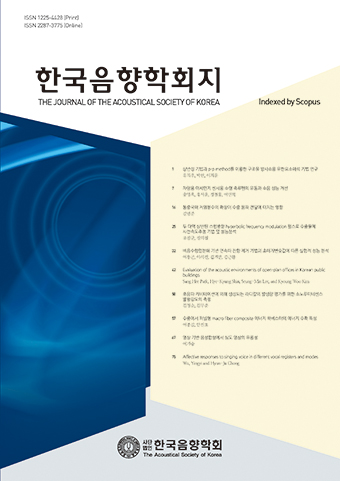 The Journal of the Acoustical Society of Korea
The Journal of the Acoustical Society of Korea
